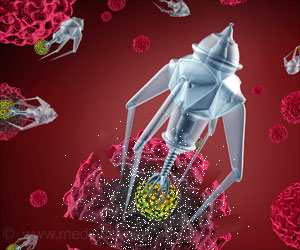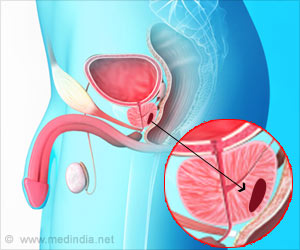
Stepwise requirements for polymerases δ and θ in theta-mediated end joining
Go to source).
Targeting Breast Cancer Mutations: Disrupting Polymerase Theta's Vital Role in Cancer Survival
“People with these breast cancer mutations, their cancers rely on polymerase theta's repair pathway to keep the tumors alive and repair DNA damage in the cancerous tissue,” said Stroik, a postdoctoral researcher in Ramsden’s lab. “Now that we know more about this pathway, scientists could, in theory, produce a drug that could disrupt key pieces of the pathway in cancer cells, as opposed to using conventional chemotherapies that destroy healthy cells along with the cancer.” Out of all DNA repair pathways, TMEJ has been the most elusive. Richard Wood, PhD, a distinguished professor at University of Texas MD Anderson Cancer Center played a key role in the first characterization of polymerase theta in 2003.‘Polymerases theta and delta are physically linked. This discovery holds promise for drug developers aiming to target this connection for innovative cancer treatments. #cancer #breastcancer #prostatecancer #menshealth #womenhealth #internationalmenday’
Tweet it Now
Over the next 15 years, multiple labs, including the Wood, Ramsden, and Gupta labs (also at Lineberger Comprehensive Cancer Center), were able to link polymerase theta to DNA repair (TMEJ) and cancer. Sylvie Doublié, PhD, an alumnus of UNC-Chapel Hill and professor of microbiology and molecular genetics at the University of Vermont, then solved the first structure of polymerase theta.Together, and with other scientists from Penn State and New York University, these researchers were dedicated to understanding precisely what steps are involved in TMEJ, and which of those steps polymerase theta does and does not perform.
With the help of these collaborators, Stroik was able to use a wide variety of cutting-edge experimental approaches to fill in the gaps in our understanding of the TMEJ pathway. Critically, she discovered that another polymerase, called polymerase delta, uses a buddy system with polymerase theta to assist it in this repair pathway.
Stroik’s research showed that polymerase theta is good at some things, but not others.
“It makes a lot of errors and it's not capable of creating large swaths of DNA at once,” said Stroik. “What was so beautiful and kind of elegant about the whole discovery is that there are two different enzymes alternating between pathway steps and helping each other out.”
Advertisement
However, this often leaves some residual flaps of single stranded DNA at the ends. Polymerase delta jumps in to cut the extraneous flaps, giving polymerase theta enough room to start synthesizing new DNA to fill in gaps in the DNA strands. Finally, polymerase delta jumps in one last time to help polymerase theta complete synthesis.
Advertisement
“Anytime you find new pieces of the pathway, you can ‘drug’ it,” said Ramsden.
Stroik and Ramsden’s new research will contribute to ongoing basic studies in polymerases theta and delta, while also aiding new cancer drugs called polymerase theta inhibitors, which are currently in clinical trials.
Reference:
- Stepwise requirements for polymerases δ and θ in theta-mediated end joining - (https://www.nature.com/articles/s41586-023-06729-7)
Source-Newswise














